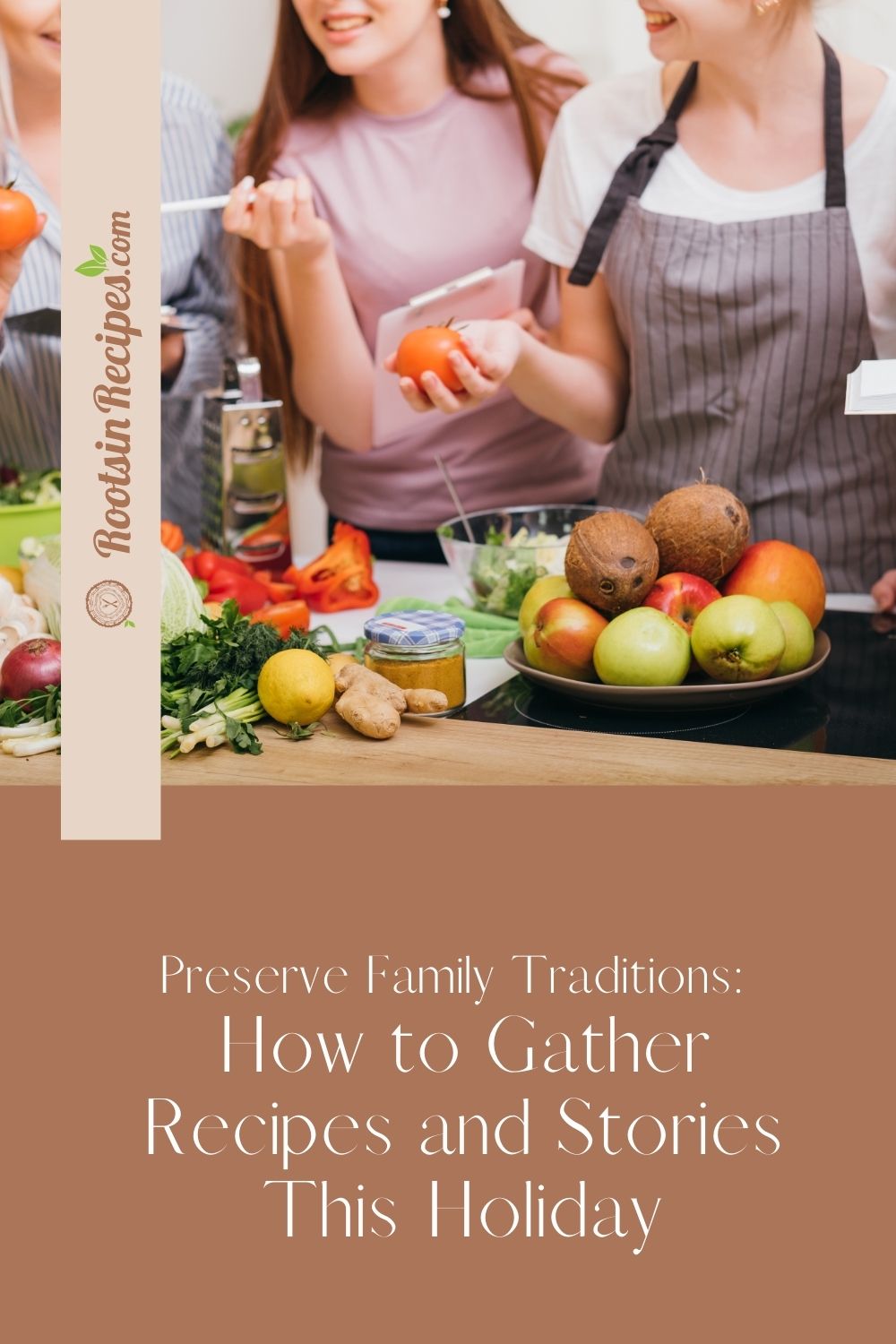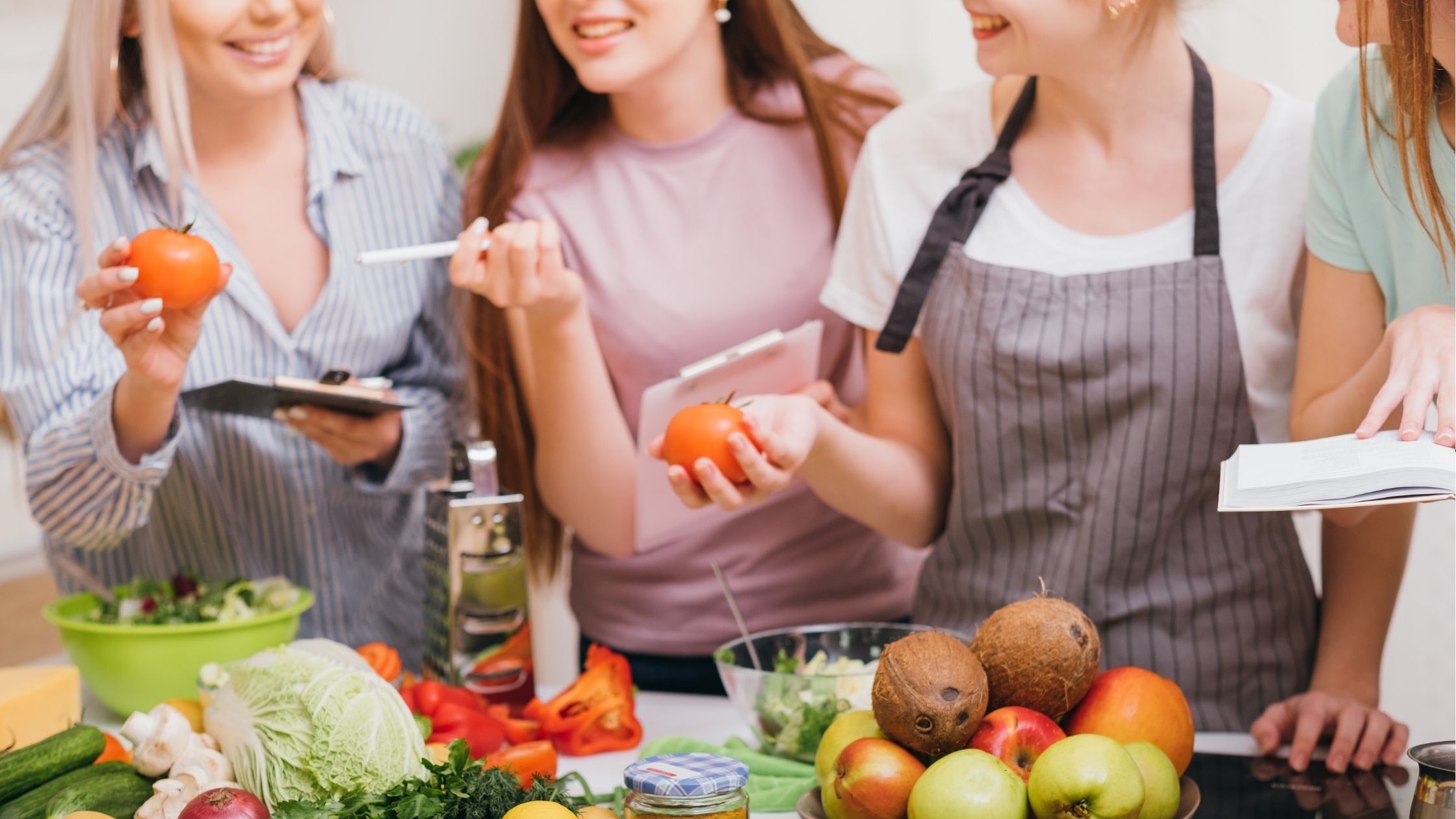
Introduction
The holidays are more than just a season of celebration—they are an opportunity to connect with loved ones and reflect on the history that shapes your family. Stories about where you come from, how your family’s traditions evolved, and the values they represent are priceless treasures. But family history isn’t just recorded in photo albums or genealogy charts; it lives in the meals shared around the table.
One of the most meaningful ways to preserve your family’s heritage is through its recipes. Recipes are not just instructions—they are memories, culture, and love passed down through generations. They capture the essence of your family’s identity, telling stories of migration, celebrations, and resilience. By collecting and preserving these recipes, you’re saving not just meals but the stories and emotions they hold.
Food also has a unique power to bring people together. Unlike other topics that can spark disagreements, food is often a source of shared joy and comfort. Asking a relative about their favorite recipe or the story behind a dish can break the ice and open the door to deeper conversations about family traditions and memories. What starts as a recipe interview may lead to heartfelt stories about childhood, celebrations, or even life lessons.
This guide will help you take the first step in preserving your family’s food heritage. By conducting informal interviews during the holidays, you’ll uncover the recipes and stories that make your family unique. Whether it’s a grandmother’s secret pie crust technique or an uncle’s famous barbecue sauce, these traditions deserve to be celebrated and saved. Here’s how to get started.

Why Start with a Family Recipe Interview?
Family recipes are more than just instructions for cooking; they are time capsules of culture, history, and personal connection. When you ask someone about a cherished recipe, you’re not just learning how to cook—you’re uncovering a piece of their life story. Recipes often hold the answers to questions about where your family came from, the traditions they carried with them, and how those traditions evolved over time.
Interviewing relatives allows you to do more than collect recipes. It opens the door to learning about the people and events that shaped your family. Who taught them how to make the dish? Was it passed down from another generation, improvised during a time of hardship, or celebrated as a symbol of success? These conversations can help piece together the fabric of your family’s past.
Preserving these recipes isn’t just about nostalgia; it’s about creating a bridge between generations. Recipes connect grandparents to grandchildren, teaching skills and tastes that might otherwise fade away. They also remind us of the values embedded in food—hospitality, creativity, and resilience—that have carried your family through challenges and triumphs alike.
Food has a unique way of fostering openness. Asking about a family recipe is a disarming and noncontroversial way to start meaningful conversations. People may feel more comfortable sharing stories about their lives when those stories are tied to food, a subject that is often lighthearted and joyous. What begins as a discussion about a favorite dish can spark memories of past holidays, childhood adventures, or life lessons learned in the kitchen.
Beyond the stories, family recipes are a way to preserve the essence of loved ones who may no longer be with us. Their handwriting on an old recipe card, their unique way of seasoning, or their insistence on using a specific ingredient—it all becomes a way to keep their spirit alive. By conducting interviews, you’re safeguarding these intangible gifts so they can be shared with future generations.
Starting with a recipe interview is one of the simplest, yet most impactful, ways to celebrate your family’s legacy. It transforms meals into memories and cooking into storytelling, ensuring that the traditions and values your family holds dear will never be forgotten.
Step 1: Setting the Stage
A good interview starts with preparation. Here’s how to create an environment that fosters comfort and conversation:
- Choose the right person:
Start with a family member who is known for their cooking or who has a special recipe to share. Older relatives, in particular, may have recipes and stories that aren’t written down. - Schedule a time:
Avoid the chaos of holiday dinners. Pick a quiet, relaxed moment when both you and your interviewee can focus. - Gather materials:
- A notebook or recording device to capture details accurately.
- A camera for documenting cooking steps or taking photos of the finished dish.
- Recipe cards or a digital app for organizing the recipe later.
Step 2: Breaking the Ice with WarmUp Questions
Ease into the conversation with openended questions that help your relative reflect on their culinary journey:
- What role did cooking play in your family when you were growing up?
- Who taught you how to cook? What’s the first dish you remember learning to make?
- Are there specific ingredients or dishes that remind you of home?
- What’s a food memory that always makes you smile?
These questions not only set a relaxed tone but also offer insight into their personal relationship with cooking.
Step 3: Unpacking the Recipe Details
Now it’s time to dig into the recipe itself. Be prepared to guide the conversation with specific prompts:
- Recipe Basics
- What is the name of this recipe?
- Where did it come from (e.g., handed down, created, or inspired by a cultural tradition)?
- Is it tied to a specific occasion or holiday?
- Ingredients
- Can you list all the ingredients? (Note exact measurements, but embrace family quirks like “a pinch” or “a handful.”)
- Are there preferred brands or local ingredients you always use?
- Do you have substitutions or variations for the recipe?
- Steps and Techniques
- Walk me through the preparation step by step.
- Are there special tools or techniques involved?
- Any “secret” tricks to getting it just right?
- Taste and Adjustments
- How do you know when the dish is done?
- Are there ways to tweak the recipe to suit different tastes?
Step 4: Capturing the Story Behind the Recipe
This is where the magic happens. Every recipe carries a history, and learning about it deepens its meaning.
- Why is this recipe special to you?
- Do you remember the first time you made it or served it?
- Has it evolved over the years?
- Are there funny, emotional, or unique memories tied to this dish?
These questions help you understand not just the recipe but also its cultural and emotional significance.
## Step 5: Visual and Sensory Details
A recipe is more than words on a page—it’s a sensory experience. Capture these elements to bring the recipe to life:
- What does the dish look, smell, and taste like?
- Take photos of the cooking process and the finished dish.
- Are there heirloom tools, handwritten notes, or other personal touches associated with the recipe?
## Step 6: Wrapping Up
Conclude the interview with an openended invitation:
- Is there anything else you’d like to share about this recipe?
- Do you have any advice or words of wisdom about cooking or family traditions for future generations?
This allows them to share any last thoughts and ensures you’ve covered all the bases.
## Step 7: What to Do After the Interview
After gathering the recipe and story, it’s time to turn it into something tangible:
- Transcribe and organize: Write out the recipe in a clear format, including all details and the accompanying story.
- Test the recipe: Cook it yourself to ensure accuracy and to connect with the process.
- Share your findings: Create a family cookbook, blog post, or scrapbook to share with relatives.
Tips for Success
- Be patient: Family recipes often come with imprecise measurements and steps. Be prepared to adapt as you go.
- Show gratitude: Thank your relatives for sharing their time and memories.
- Enjoy the moment: This isn’t just about the recipe—it’s about bonding with your family and preserving shared history.
Conclusion
The act of preserving family recipes goes beyond cooking; it’s about keeping stories, culture, and love alive for generations to come. By starting these conversations during the holidays, you not only honor your family’s past but also create a meaningful gift for the future. So, grab a notebook, set up an interview, and let your culinary heritage journey begin!
Planning Makes Perfect
Before diving in, take some time to plan your approach. Start by listing the family members whose recipes and stories you’d like to include. Think about what themes might work well for your cookbook, whether it’s holiday traditions, everyday meals, or special occasions. Consider organizing your recipes by categories, such as appetizers, main courses, desserts, or even regions if your family has roots in different parts of the world.
When you’re ready to gather recipes, create a list of questions to ask during your interviews. These could include, “What’s the story behind this dish?” or “Who taught you to make it?” Capturing the personal and cultural context of each recipe will make your cookbook more meaningful.
Don’t forget to think about visuals! Whether it’s photographs of the finished dishes, old family pictures, or handwritten recipe cards, having these planned ahead will help create a beautiful, cohesive look for your book.
Ready to Start?
The more you plan ahead, the easier it will be to bring your cookbook to life. Once you have a roadmap, you’ll be able to focus on the fun part—collecting, cooking, and preserving your family’s culinary heritage. Take the next step and start building your personalized recipe book with Roots In Recipes today. Your family’s legacy is waiting to be shared!